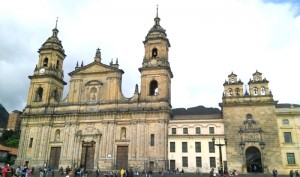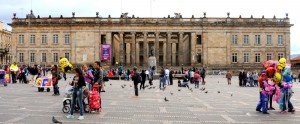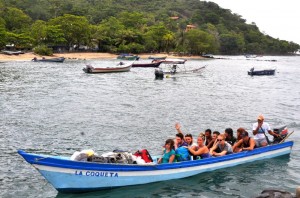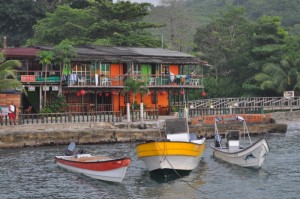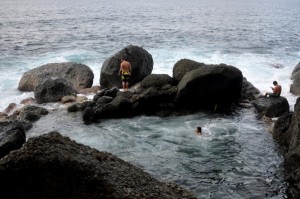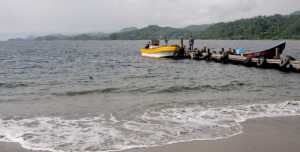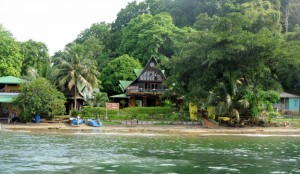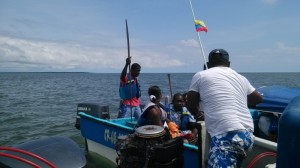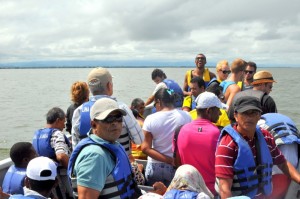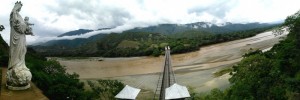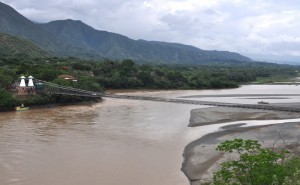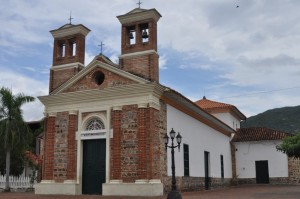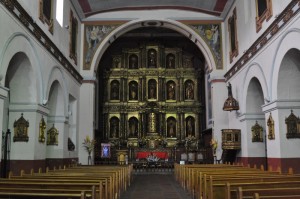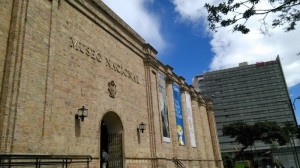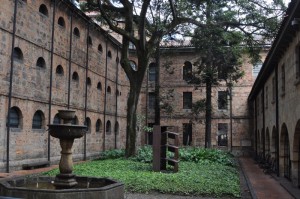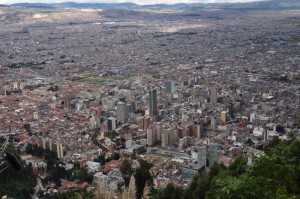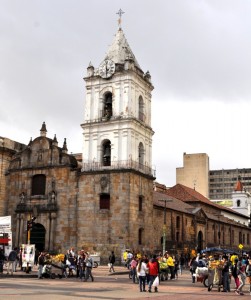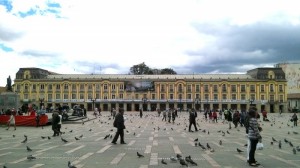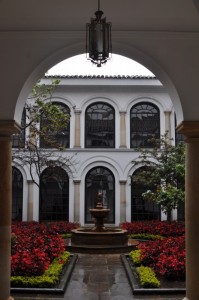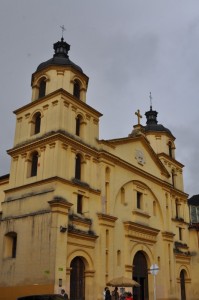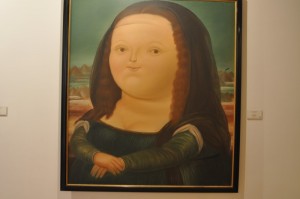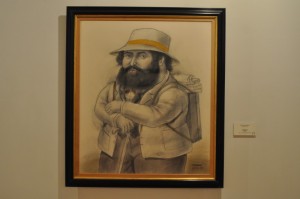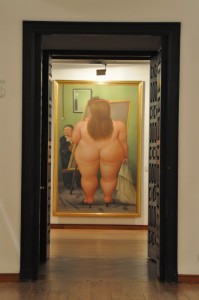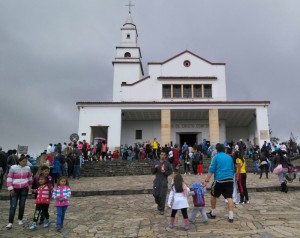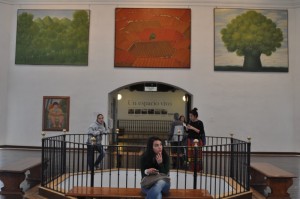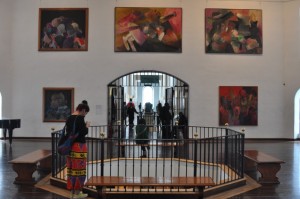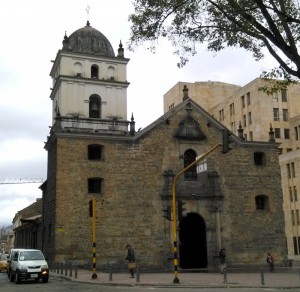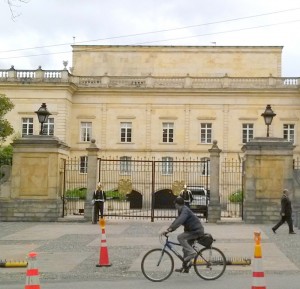Capurganá, Santa Fe de Antioquia & Bogotá
June 3 Tuesday: Armilla, Panama – Capurganá, Colombia
I landed at the dock at Capurganá at 1:45pm. I like this picturesque town: some of the houses are painted with bright colours and the lush green hills provide a lovely backdrop. There are only horse-drawn carts and no cars. We were arranged to stay at Hotel Luz de Oriente.
After getting an entry stamp on my passport after lunch (as the immigration office was closed for lunch when we landed), I brought a boat ticket for COP$55,000 to Turbo. There are few walks in the area. At 3:45pm, I departed with a few young people on a 45-minute walk along the coast to El Cielo. This is a popular spot for swimming in a cool pool by the hill side and a rock pool by the sea. I enjoy the scenic walk.
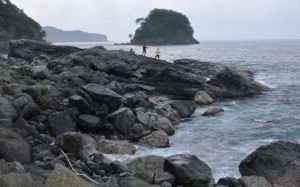 |
|
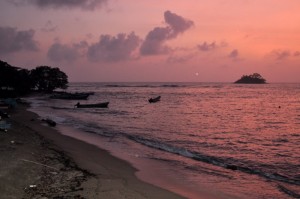 |
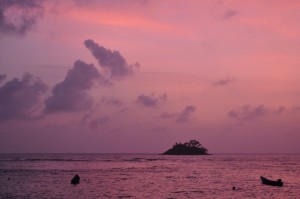 |
When I was about to go out for dinner, the lights were off and the whole town was in darkness. Apparently electricity is intermittent and the people are well-prepared. I had a set dinner with fish soup, rice with fish and a juice for COP$12,000. The food is simple but nice. I was tired and went to bed before 11pm. But I could not sleep: it was hot and humid. I was bitten and my skin was itchy.
June 4 Wednesday: Capurganá – Turbo – Santa Fe de Antioquia
As I could not sleep, I got up early to watch sunrise. Fishermen were already out in the sea and children were getting ready for school.
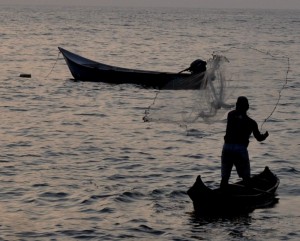 |
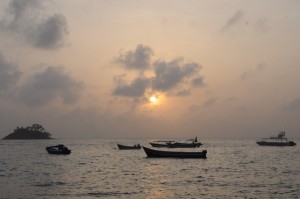 |
I arrived at the dock by 6:45am. Though the ticket said 7am, the boat with 32 passengers did not leave till 7:45am. Each passenger is allowed 10kg of baggage. My two bags weighed 30kg and I had to pay COP$15,000. As all the seats (five in a row) had been taken, I had a privileged (probably the best) seat next to the boat driver. The only problem is the wave which showers on me!
It was an eventful ride to Turbo. First, the boat stopped twice in the middle of the sea as it had problem with the engine. When the problem could not be fixed, the boat driver took the boat to a village to get spare parts. After 20 minutes, we were on the way though the engine failed once more (but got fixed again).
Then another problem emerged: the boat was running out of fuel. Our boat driver stopped another boat to get whatever it could spare for him. He managed to arrive at the refilling station outside Turbo.
All boats have to stop for checks at a police post just outside the dock. Our boat man handed in the name list of passengers with passport/ID details. The guard was difficult and asked bags to be checked. Luckily after searching two bags, he allowed the boat to leave. We were relieved when we finally got off the boat at 10:45am after spending three instead of two hours on this short journey!
I had no fixed plan except that I had to be in Bogotá in time for my onward flight to Europe. My initial plan was to go to Santa Marta, the oldest town founded by the Spanish in Colombia by the Caribbean Sea where Simón Bolívar died in 1821. On second thought this plan would not work: too much time would be wasted on the road. I should go to Medellín and then Bogotá direct. The whole journey without stop takes about 17 hours.
At the pier, I found out that two Irish young men and a Swiss would be going to Medellín as well. One guy speaks fluent Spanish. They were met at the pier by a local guy who had been introduced to the guys by Olivia. I let down my guard and simply followed them. This local guy and his friends took us to an ATM as my friends were desperate to get some cash. After a quick lunch, we were taken to a bus stop and got on board our bus at 12 noon. We all tipped him (COP$2,000) before we got on the bus. Then one of them was on the bus and asked us to pay a bus fare of COP$62,000. We all paid without asking. But we were cheated: the ticket is only COP$50,000. These guy had robbed us of COP$56,000 within less than an hour. My young friends were angry for misplacing their trust in a person recommended by Olivia. They are backpackers and are cash poor: COP$14,000 is not a small sum!
As soon as I knew the bus would be passing through Santa Fe de Antioquia, a well-preserved colonial town, I decided to break the journey. Despite the short distance, the bus ride took some eight hours including coffee and dinner breaks. Around 8pm, I finally reached Plaza Mayor, the heart of Santa Fe de Antioquia which has a population of about 30,000. I stayed at Hostal Plaza Mayor which is recommended by Lonely Planet. I had a single room with shower for COP$20,000. The room has a rustic and nostalgic atmosphere. I felt so comfortable that I decided to spend two nights here.
June 5, Thursday: Santa Fe de Antioquia
Founded in 1541, the town was prosperous during the colonial days and was the capital of the province until 1826. One of the main attractions here is the Puente de Occidente, 5km east of the town. This 291m-long suspension bridge over Río Cauca was completed in 1895.
I got up late but still felt tired. I paid a motor-taxi driver COP$14,000 to see the bridge for. He dropped me off on the other side of the bridge and I walked taking my time to look at the river and bridge. Then I climbed up a short but steep slope for a better view of the bridge and surrounding mountain ranges.
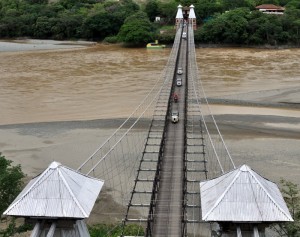 |
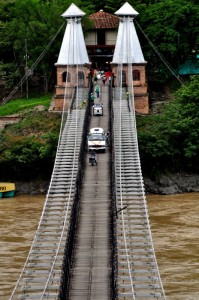 |
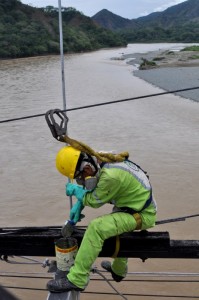 |
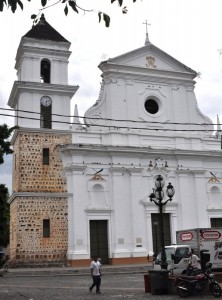 |
When I got back to the plaza about 10am, I felt very hot and tired. After walking for a while, I was exhausted and knew I had a fever. But I could not return to my hostal till I had booked a hotel in Bogotá. Luckily I found a coffee shop in a hotel with free Wi-Fi. Hence I spent over an hour surfing on internet and managed to book a room at the Ibis Museo Hotel with a weekend rate of COP$119,000.
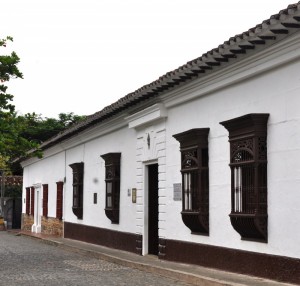 |
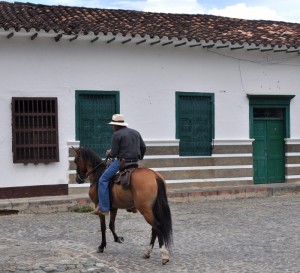 |
I took my temperature which was over 38ᴼC. I might have got a flu as the air-conditioning on the long distance bus was freezing. I slept from 1 to 4pm hoping the fever would go away. But my temperature fluctuated between 38 and 38.8ᴼC the whole afternoon. As I had to be fit for my flight in a few days’ time, I decided to take medication.
A pharmacy recommended me to take one Adormant pill every four hours. After taking a tablet, I slept for three hours and got up after 7pm. I did feel better though I still had a temperature. I had not eaten the whole day and suddenly felt it’s time to eat something light. I got a hot croissant from a nice local bakery. By 9pm my temperature had gone back to normal and I felt much better. I had been sleeping so much during the day that I could not get back to sleep till 1 am!
June 6 Friday: Sante Fe de Antioquia– Bogotá
I got up around 6am and took a 9-seater minibus to Medellín at 7:15am (COP$1,300). The public transportation system is well organized and efficient. I arrived at the Terminal del Norte in time to catch a 9am bus to Bogotá (COP$55,000). I was moved when the locals helped me carry my heavy suitcase.
The journey was supposed to take nine hours. But owing to lots of repair and construction works on the winding roads, it took almost 11 hours. Then I found to my horror two long queues for taxi. As it was raining and a Friday evening, it took me an hour and a half to get on a taxi to Ibis Museo Hotel next to the National Museum.
By the time I settled in my room, it was already 10pm. I often stay at Ibis Hotel which has simple but practical modern furniture, bright rooms with a good layout and above all good free Wi-Fi service. The first thing I did this time was to take a steaming hot shower which I had not had for over a month. I then spent hours catching up on internet banking and emails. By the time I got into my bed, it was after 2am. For the first time in my life, I appreciate the warmth and comfort of a duvet, a nice firm bed and a good soft pillow.
June 7-8 Saturday & Sunday: Bogotá
Bogotá founded in August 1538 by Gonzalo Jiménez de Quesada, is the capital of Colombia. Located in a high plateau at an elevation of 2600m, it is bordered by the Eastern Cordillera of the Andes mountain range in the east and the Guadalupe and Monserrate mountains in west, the area was first populated by the Muiscas, an indigenous people.
During the colonial era, Santa Fe (now Bogotá) was the capital of the Viceroyalty of New Granada that existed in the territories of modern Colombia, Ecuador, Panama, Venezuela, Guyana, and southwestern Suriname, parts of northwestern Brazil, northern Peru, Costa Rica and Nicaragua.
Today’s Bogotá is a sprawling city with an area of 1700 km² with a population of over 7million. As the political, cultural, educational and economic centre since the colonial era, Bogotá boasts impressive colonial architectures, libraries, museums, art galleries, concert halls, theatres and parks.
It is also a city of extremes: elegant colonial architecture in the historical centre of La Candelaria, a new airport and development zone next to it, modern towers of finance and hotels in the commercial and financial districts, a high class area with high concentration of bars and eateries known for its night life in Chicó and Zone Rosa. But dilapidated buildings with garbage/litter are a common scene too. The southern part of the city is also filled with ramshackle shanties.
Saturday: I curled up in my comfortable warm bed till midday. I had a good wholesome lunch with chicken soup, boiled chicken thigh and drumstick with rice and a mango juice Then I spent the afternoon exploring La Candelaria on foot.
La Candelaria, the historic centre of Bogotá, is a must-see for tourists. It is also important for the whole country: the President’s office, the legislature and the judiciary are all located within walking distance here. I strolled aimlessly along the cobbled streets, stopped at the Plaza de Bolívar, the most beautiful square of the capital which is surrounded by the most important buildings of the city namely the Justice Palace, the Primary Cathedral (completed in 1823), Capilla del Sagrario (17th century – the oldest and only surviving building from the colonial times), Capitolio Nacional and the Liévano Palace. Each was built with different architectural styles.
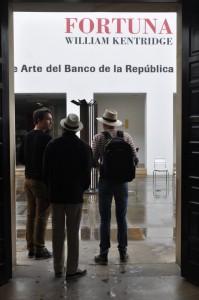 |
Calle 11 is one of the places not to be missed. I started at the Iglesia La Candelaria (1686-1703) which gives the name to the entire area. Inside the church are paintings by Gregorio Vásquez (1638-1711), the most famous Colombian artist of the colonial period. Opposite the church is a museum complex housing the Museo Botera, Casa De Moneda and two other museums. There is a special exhibition on a contemporary artist.
I love Botera’s works: the sight of his lovely round fat figures (of everything whether it is a human body, a structure, an animal or a fruit) cheers me. I have an impulse to touch figures in his painting. I spent over two hours here. By 4:30pm, I was tired of museums and got out for fresh air. On the same street is the Gabriel Garcia Marquez Cultural Centre. The Nobel laureate passed away on April 17 at the age of 87 in Mexico. Colombians are still mourning for their national hero. Then I arrived at a row of restaurants specializing in typical foods (both for breakfast and lunch) and sweets which look enticing. I do not have a sweet tooth but I brought one for COP$1,000 to try. Not bad!
The weather here is strange: it can have both sunshine and shower at the same. Today’s is cold and rainy. Walking along Av Carrera 7 lined with shops, street food and local eateries is fun. It’s time for dinner and I finally found a BBQ restaurant. I ordered a plate with roast pork and spare ribs for COP$19,000. The portion is very generous. I managed to eat only a third of it and took the rest away. By 8pm, I was back in my room ready for bed.
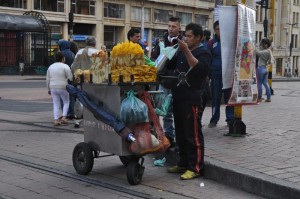 |
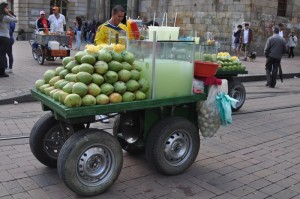 |
Sunday: I woke up and was delighted to see sunshine and a blue sky. I therefore made my way to Cerro de Monserrate (3200m) towering over the historic centre of Bogotá.
Originally I intended to follow the locals to climb the 1,500 steps to the top. I decided to take the funicular in order to save time. I paid only COP$9,400 for a return ticket: it is a most value-for-money ride. The funicular makes a truly gravity-defying crawl up the mountainside: it must be an engineering achievement at its time.
The church at the summit was packed and the panoramic views of the city and the surrounding mountains are breathtaking. Unfortunately, it started to get cloudy and drizzle.
On my way down, I took the cable car and was back in town before 11am. In the afternoon, I visited two museums. First the National Museum. It is converted from an old prison. The conversion is well done and the presentation and interpretations of exhibits are very good. There are many paintings by Botera again. The exhibits on Ciudad Perdida (‘Lost City’), San Augustín and Tierradentro (the last two are World Heritage Sites) are interesting.
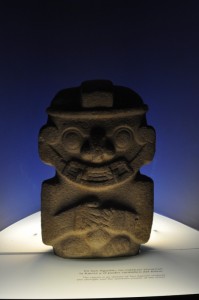 |
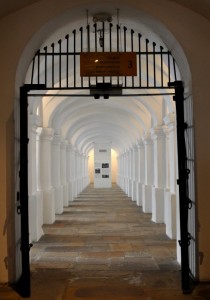 |
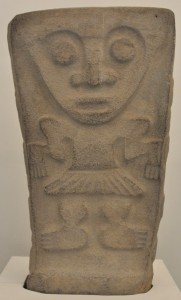 |
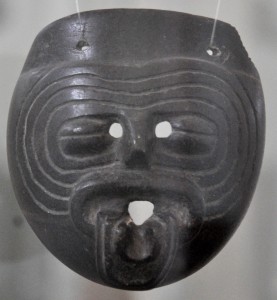 |
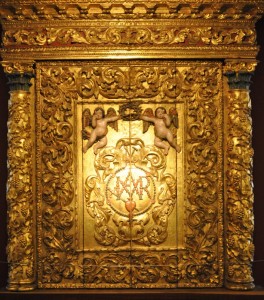 |
Then I spent over an hour and a half at the Museo del Oro (the Gold Museum) with some 34,000 gold pieces from all the major pre-Hispanic cultures in the country. I am impressed by the arrangements and layout of the museum i.e. the rooms are divided into themes and locations with simple but comprehensive information and interpretations.
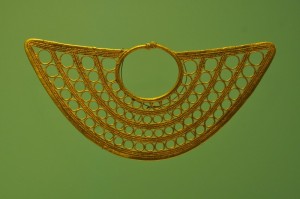 |
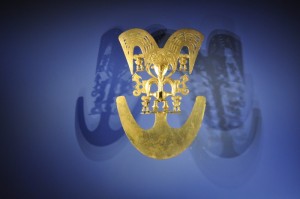 |
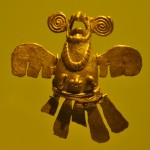 |
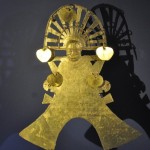 |
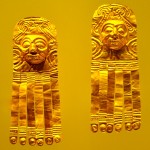 |
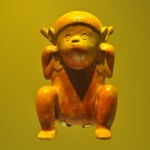 |
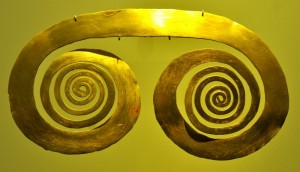 |
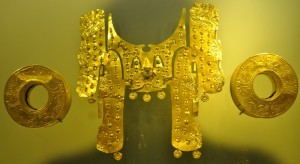 |
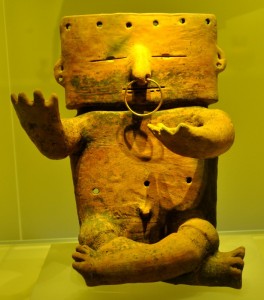 |
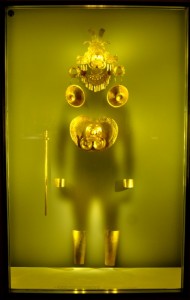 |
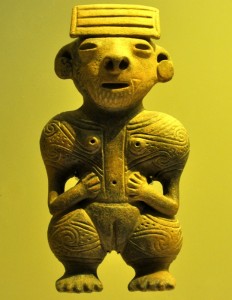 |
In the evening when I was preparing for my flight and checked the e-ticket stored in my computer, I suddenly discovered that my flight was on June 9 and not June 10. I might have mixed up the dates as I kept telling friends that I would be flying to London on June 10 (but it’s from Madrid!). I was lucky to discover my mistake in good time. Hence I was busy arranging my accommodation for June 10 in London.
June 9 Monday – Bogotá, Colombia – Madrid, Spain – London, UK
I had a free morning as my flight was at 5:15pm. I walked to the Nariño Palace (official home and workplace of the President of Colombia) and Temple del San Augustín which wooden interior is elegant and impressive.
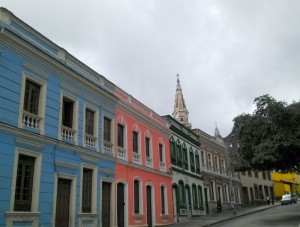 |
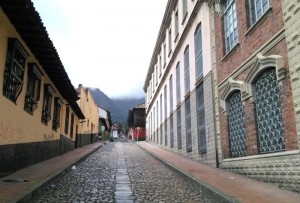 |
I cannot leave a city without getting a feel about the place and using its public transportation. Hence I got on the TransMileno, the city’s public transportation which enables buses charging though the main thorough-fares on their own dedicated roads. I took B74 up to Calle 80 (Stop: Heroes) and then jumped into another bus on the other side of the platform to go back to the centre. The bus ride is fun and cheap (COP$1,400).
I had a big lunch with a grilled fish for COP$30,000. Then I took a taxi to the airport which is probably the biggest and newest with good facilities in South America. On the way, I saw lots of new and modern developments near the airport. The plane took off on time and I had a stop-over in Madrid for three hours. Luckily there is a lounge and free Wi-Fi. Time passed by without problem. Then I had a short flight at 1:30pm (GMT +1) and I arrived in London before 3pm on June 10.
Remarks (to add)


